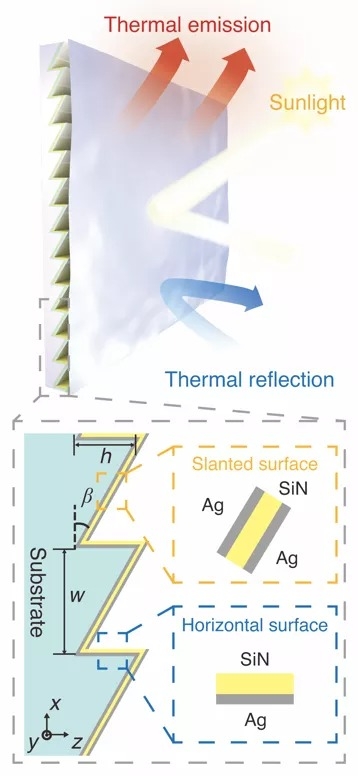China - 20 December, 2024 - Radiative heat transfer is one of the most critical energy transfer mechanisms in nature. However, traditional blackbody radiation, due to its inherent characteristics such as non-directional, incoherent, broad-spectrum, and unpolarized nature, results in energy exchange between the radiating body and all surrounding objects, significantly limiting heat transfer efficiency and thermal flow control. These limitations hinder its practical applications.
A recent breakthrough study (DOI: 10.1126/science.adn2524) published in Science, uncovered by a research team led by Prof. Wei Li from the Changchun Institute of Optics, Fine Mechanics and Physics (CIOMP) of the Chinese Academy of Sciences, in collaboration with Prof. Shanhui Fan’s team from Stanford University and Prof. Andrea Alu’s team from the City University of New York, utilized thermal photonics to achieve cross-band synergistic control of thermal radiation in both angle and spectrum. They then designed a directional emitter with cross-scale symmetry-breaking, angularly asymmetric and spectrally selective thermal emission, achieving daytime subambient radiative cooling on vertical surfaces.
“Previous radiative coolers typically exhibited omnidirectional thermal radiation properties, making them suitable only for horizontal surfaces. However, when applied to vertical surfaces, the field of view to the cold sky is drastically reduced. At the same time, they must absorb considerable heat from the ground, surrounding objects, and atmosphere. This leads to the failure of subambient radiative cooling on vertical surfaces,” said Professor Wei Li.
To address this challenge, they utilized thermal photonics to achieve cross-band synergistic control of thermal radiation in both angle and spectrum. They designed an angularly asymmetric and spectrally selective thermal emitter (AS emitter) using a cross-scale symmetry-breaking structure. The AS emitter consists of a sawtooth grating covered by an ultraviolet-visible reflective, IR transparent nanoporous polyethylene (nanoPE) film. The combination of the Ag layers and the nanoPE film results in strong reflection over the entire solar wavelength range. The SiN layers provide spectrally selective emissions due to its phonon polarization resonance and the outermost Ag layer is designed to reflect the thermal radiation of ground.
“Our AS emitter maintained a steady-state temperature substantially below the ambient temperature over the entire day. Even under peak sunlight, AS emitter still maintained a temperature of 2.5℃ below ambient temperature, corresponding to a temperature reduction of 4.3 and 8.9℃ compared to conventional high-performance radiative cooler and commercial white paint, respectively. Thanks to our design strategy’s flexible ability to tune the angular coverage of thermal emission, we can redesign the AS emitter based on practical scenarios. Even if we face the AS emitter towards a hot building wall, it still can achieve subambient radiative cooling,” said Fei Xie, the paper’s first author and an assistant professor in Li’s group.
Looking ahead, Prof. Wei Li envisions that their design strategy could also be applied to a wide range of common real-world scenarios involving inclined or vertical surfaces, such as walls, clothing, the sides of vehicles; and the capability of AS thermal emission has potential impacts of reduced heating and global energy consumption.
In conclusion, this innovative work breaks through the limitation of conventional radiative coolers, which can only function on horizontal surfaces, achieving a dimensional leap in radiative cooling technology from horizontal surfaces to practical three-dimensional scenarios. It also opens up new possibilities in the field of energy and sustainability, offering new thermal management solutions for energy-efficient technologies in a variety of applications.
References: DOI10.1126/science.adn2524
Original Source URL: https://www.science.org/doi/10.1126/science.adn2524
Funding information
This work was supported by the National Natural Science Foundation of China (grants 62134009 and 62121005 to W.L.), the US Department of Energy (grant DE-FG02-07ER46426 to S.F.), and a Vannevar Bush Faculty Fellowship (to A.A.).
About Science
Science has been at the center of important scientific discovery since its founding in 1880 — with seed money from Thomas Edison. Today, Science continues to publish the very best in research across the sciences, with articles that consistently rank among the most cited in the world.
Media Contact
Company Name: CIOMP
Contact Person: Wei Li
Email: Send Email
Country: China
Website: ciomp.ac.cn


